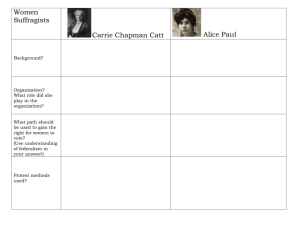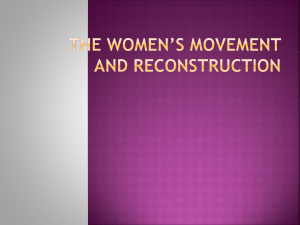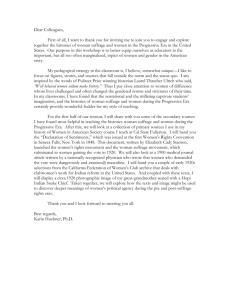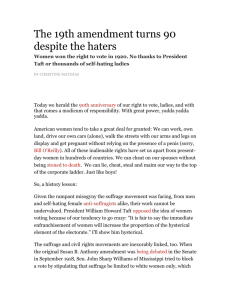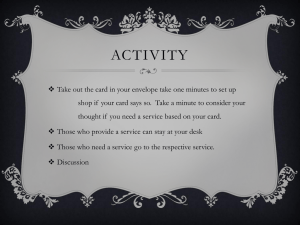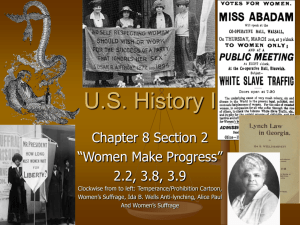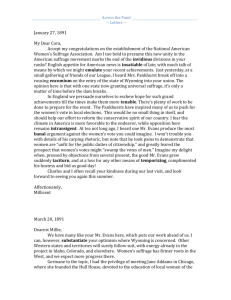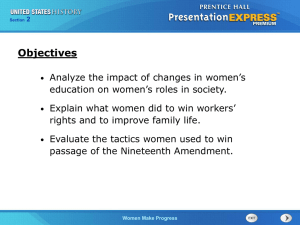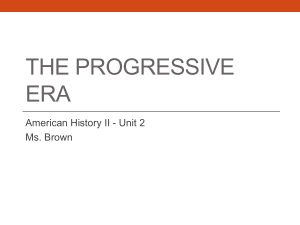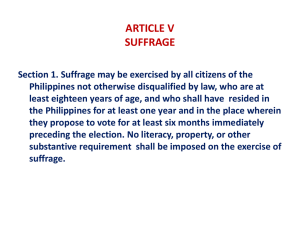9.2 – Women in Public Life
advertisement
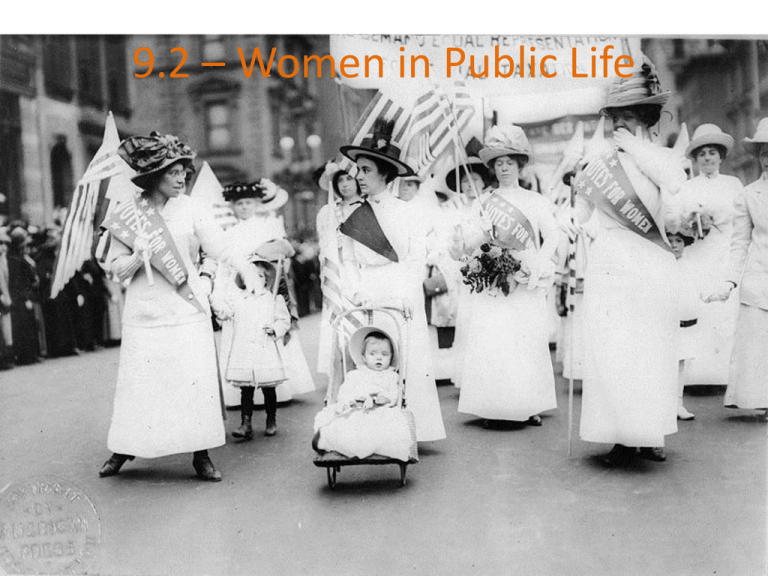
9.2 – Women in Public Life Setting the Stage • The role of women was drastically changing around 1900 • Women were becoming more independent • Susette La Flesche – works for rights of Native Americans – 1887: The Dawes Act • Expanded roles & participation in public life Women in the Work Force • Before the Civil War: Women worked in the home • 1900: Adventure to the work force = survival – 1:5 Women held jobs • Farms: Women work in the home, take care of livestock, harvest crops • Industry: Better paying opportunities to support the family Industry • Women were denied union membership • 25% of women worked in manufacturing – Most work in the textiles • Hold the least skilled positions & paid ½ as much • Start to work in offices, stores & the classroom • 1890: women outnumber men as high school graduates Domestic Workers • Many uneducated/unskilled women turn to cleaning homes – Ex: African-American women after the end of slavery • Jobs include cooks, maids, scrubbers, laundresses • 1870: ~70% of employed women work as servants The Lead to Reform • Dangerous conditions, low wages, long hours lead for reform • Movements pick up after the Triangle Shirtwaist Factory Fire (146 dead) • 1910: Women’s clubs expand rapidly – Discuss art, literature, & life Women in Higher Education • Most active women attended the new women’s colleges • 1865: Vassar College – 1st to accept women – Columbia, Brown, Harvard form separate colleges – Sophia Smith – p. 315 • Marriage no longer only alternative – women can gain effective status in the work force Women & Reform • Workplace reforms were bolstered by newly educated women • “Social Housekeeping” – focus on work & home; couldn’t vote • 1896: NACW – managed facilities for young children • 1848: Seneca Falls Convention – 1st organized meeting to focus on reforms for women in America Early Suffrage • 1869: Susan B. Anthony & Elizabeth Cady Stanton the NWSA – 1st major group for suffrage • 1890: Combines to form the National American Woman Suffrage Association • Opposition – Liquor Industry – Prohibition – Textile Industry – Child Labor – Men – Fear societal role change Suffrage: 3-Part Strategy • 1) Attack state legislatures for right to vote – 1869: Wyoming • 2) Use court cases to test the 14th Amendment – citizens? – Supreme Court deemed citizenship doesn’t include voting • 3) National Constitutional Amendment to vote • Suffrage was modestly successful, but great reforms were achieved “The Awakening” Suffrage Before 1920 Green = Full Suffrage Orange = Presidential Suffrage Red = No Suffrage
